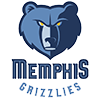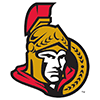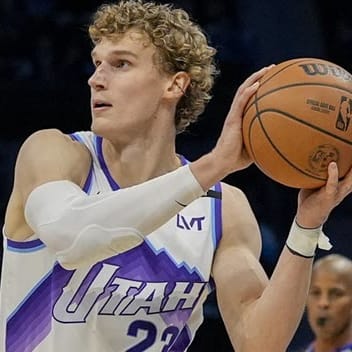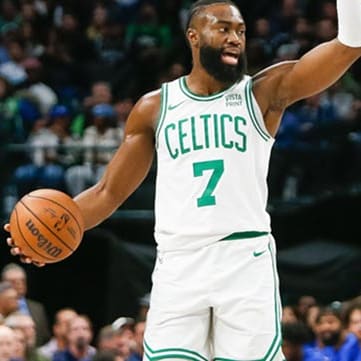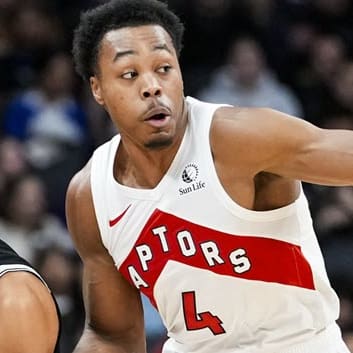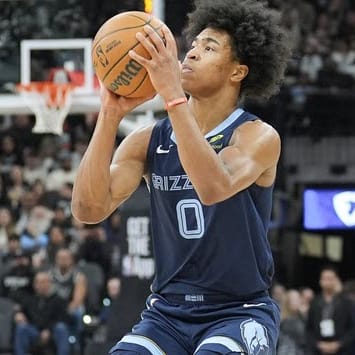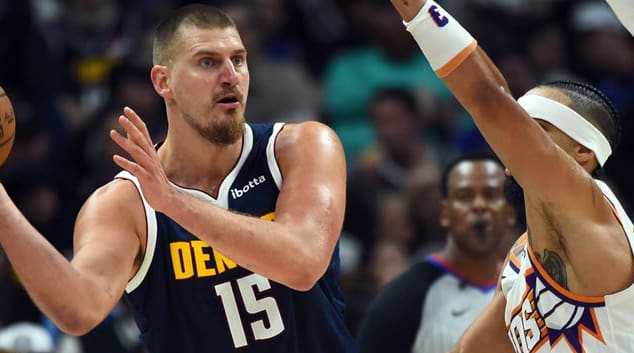Identifying sleepers is an essential exercise heading into any fantasy draft, and that certainly rings true in fantasy basketball. Given that the NBA encompasses the smallest player pool of the four major sports, it's often difficult to unearth any truly out-of-nowhere gems on draft day that aren't already on your leaguemates' radar, especially in competitive formats. If you had the foresight to identify a training camp invitee like Hassan Whiteside as a star in the making from his camp reports with the Grizzlies in the fall of 2014, you should ditch your fantasy league and apply for a scouting job.
For this reason, I and many others believe the term "sleeper" is best redefined as "undervalued," with value in this case being derived from where a player's average draft position (ADP) falls in mock drafts and/or actual drafts. In essence, rather than just making note of a player whose production you believe will outpace his projections, it's important to know when to target him in your draft in order to extract the most possible value from each of your draft slots.
Draft season hasn't truly heated up yet with training camps barely underway, but league host sites like ESPN, Yahoo!, and CBS have already compiled enough data to establish ADP baselines to aid fantasy owners in their preparation. These ADP results will of course change as injuries, trades and other news arise during the preseason, so feel free to inquire in the comment section about any players
Identifying sleepers is an essential exercise heading into any fantasy draft, and that certainly rings true in fantasy basketball. Given that the NBA encompasses the smallest player pool of the four major sports, it's often difficult to unearth any truly out-of-nowhere gems on draft day that aren't already on your leaguemates' radar, especially in competitive formats. If you had the foresight to identify a training camp invitee like Hassan Whiteside as a star in the making from his camp reports with the Grizzlies in the fall of 2014, you should ditch your fantasy league and apply for a scouting job.
For this reason, I and many others believe the term "sleeper" is best redefined as "undervalued," with value in this case being derived from where a player's average draft position (ADP) falls in mock drafts and/or actual drafts. In essence, rather than just making note of a player whose production you believe will outpace his projections, it's important to know when to target him in your draft in order to extract the most possible value from each of your draft slots.
Draft season hasn't truly heated up yet with training camps barely underway, but league host sites like ESPN, Yahoo!, and CBS have already compiled enough data to establish ADP baselines to aid fantasy owners in their preparation. These ADP results will of course change as injuries, trades and other news arise during the preseason, so feel free to inquire in the comment section about any players you'd like to hear about if you're first reading this well after the publish date.
This article will focus on players with ADPs of 100 or below that I believe are being undervalued across all three of the aforementioned host sites. While the utility of each player will vary according to a fantasy owner's roster requirements, statistical needs and league scoring system, I generally like all as late-round targets based on where they've typically fallen in drafts.
Note: Positional eligibility may vary across host sites. The ADPs shown are based on drafts in standard leagues as of Sept. 28.
Jerryd Bayless, PG, 76ers
ESPN ADP: 200+/Undrafted
Yahoo! ADP: 144
CBS ADP: 164
Since entering the NBA as a lottery pick in 2008, Bayless has lived a nomadic professional existence, spending time with seven different organizations. For much his career, he's worked as a backup combo guard, but he saw his largest role to date as a member of the Bucks in 2016-17. Though injuries limited him to 52 games, he made a career-high 18 starts and averaged 10.4 points, 3.1 assists, 2.7 rebounds and 1.9 three-pointers in 28.9 minutes per game. Most impressively, he shot an outstanding 43.7 percent from three-point range. That performance earned him a three-year contract with the Sixers in the offseason, and he'll now enter a season in a full-time starting role for the first time in his career. While his overall efficiency figures to take a hit with few other capable offensive weapons around him in Philadelphia, Bayless' contributions in the counting stats categories should soar to new heights. Much like Ish Smith did after landing in Philadelphia last December, look for Bayless to dominate the minutes at point guard, as neither T.J. McConnell nor Sergio Rodriguez are capable of providing the scoring the 76ers desperately need from the backcourt.
Tim Frazier, PG, Pelicans
ESPN ADP: 157
Yahoo! ADP: 138
CBS ADP: 174+/Undrafted
With Jrue Holiday (personal) out indefinitely and Tyreke Evans (knee) unlikely to return until at least December, the Pelicans will hold a competition at point guard during camp. It's expected that Frazier and offseason pickups E'Twaun Moore, Langston Galloway and Lance Stephenson will see time at the position once the season starts, but there's good reason to think that Frazier is the frontrunner of the group. As a member of the Bulls last season, Moore showed limited capabilities as a distributor in his spot starts at point guard, but shot an outstanding 45.2 percent from three-point range, making him a better option at shooting guard. Like Moore, the 6-foot-5, thick-chested Stephenson is also able to handle the ball, but his size makes him a better fit on the wing, where he'll help absorb some of the minutes vacated by Evans. That would leave Frazier and Galloway as the most realistic candidates to start at point guard, and Frazier's existing familiarity with coach Alvin Gentry and his strong finish to last season could be enough to give him the upper hand. When Holiday was sidelined for the final nine games of the 2015-16 campaign due to an eye injury, Frazier's production skyrocketed, with the 25-year-old averaging 13.4 points, 9.8 assists, 4.7 rebounds, 1.8 steals and 1.0 three-pointer in 31.9 minutes per game. Frazier's playing time will likely fall a little from that level since the Pelicans now have better depth on hand at point guard, but even in a 25-minute role, he could churn out strong multi-category production for as long as Holiday and Evans are out.
Marcus Smart, SG, Celtics
ESPN ADP: 178
Yahoo! ADP: 125
CBS ADP: 132
Through two NBA seasons, Smart has already gained a reputation as one of the league's top young perimeter defenders. Unfortunately, he's failed to progress on the other end of the court, owning pitiful shooting marks of 35.7 percent from the field and 29.6 percent from three-point range over his career. That lack of efficiency may continue to limit his value in rotisserie formats, but Smart has already been a solid contributor in points leagues, and he figures to become an even greater asset there in 2016-17. After Evan Turner left for the Trail Blazers this offseason, the Celtics need somebody to fill his 28 minutes per game, and Smart, who can play both backcourt spots and guard small forwards, is the team's best option to do so. An uptick in playing time won't help the 22-year-old improve his shooting in a dramatic way, but he should clear double-digit scoring for the first time in his career along with chipping in helpful totals in the rebounds, assists and steals categories.
Josh Richardson, SG, Heat
ESPN ADP: 180
Yahoo! ADP: 142
CBS ADP: 166
No team lost more talent this offseason than the Heat, who weren't able to retain free agents Dwyane Wade and Luol Deng and acknowledged earlier in September that Chris Bosh is still showing evidence of blood clots in his calf and is unlikely to play for the team again. None of the three starting spots up for grabs are expected to fall to Richardson initially, but because of the high caliber of players the Heat lost, the second-year swingman is on tap to see an increase in both playing time and shot attempts even if he continues to stick in a reserve role. As an unheralded second-round draft pick, Richardson was highly impressive in a complementary role during his rookie year, averaging 6.6 points, 2.1 rebounds, 1.4 assists and 1.0 three-pointer in 21.3 minutes per game while shooting 45.2 percent from the field and a blistering 46.1 percent from three-point range. Those pristine marks should take a hit now that the Heat have fewer creators to set up Richardson, but the uptick in volume he'll receive will prove beneficial to his fantasy value. Richardson's draft stock is depressed at the moment thanks to a partially torn MCL in his right knee, but he didn't require surgery and is already showing encouraging progress. It doesn't seem likely that he'll be sidelined for more than the first handful of games of the season, so the risk appears fairly low here.
T.J. Warren, SF, Suns
ESPN ADP: 200+/Undrafted
Yahoo! ADP: 151
CBS ADP: 174+/Undrafted
Warren's ADP figures to rise throughout draft season, as starting small forward P.J. Tucker underwent back surgery in mid-September and is expected to be sidelined for six-to-eight weeks. While second-year shooting guard Devin Booker could very well move over to small forward in Tucker's absence and allow the Suns to put out their most talented lineup, Booker already averaged 27.7 minutes per game last season, so he won't be able to absorb all of Tucker's 25-to-30 minutes. That leaves Warren as the primary beneficiary with Tucker out, and the 23-year-old has the skills to remain ahead of Tucker in the rotation once both are healthy. Tucker's the more polished defender of the pair, but Warren has the far greater fantasy upside after averaging 11.0 points (on 50.1% shooting from the field) and 3.1 rebounds in just 22.8 minutes per game last season. Moreover, Tucker is 31 years old and an unrestricted free agent next summer, so it might behoove the rebuilding Suns to trade him later this season in order to open up more time for Warren, who missed out on some meaningful development time after suffering a broken foot last February. Warren has now fully recovered from the injury and isn't expected to face any restrictions during training camp, so he'll have every opportunity to stake his claim to a starting role or the sixth man gig when the season begins.
Rondae Hollis-Jefferson, SF, Nets
ESPN ADP: 200+/Undrafted
Yahoo! ADP: 116
CBS ADP: 122
Aside from Brook Lopez, no player on the Nets roster would likely start on the majority of the other NBA teams, but Hollis-Jefferson could soon change that. Though the 21-year-old only played 29 games as a rookie after suffering a broken ankle, he established himself as the Nets' top perimeter defender prior to the injury. His per-36 minute averages of 9.8 points (on 45.7% shooting from the field), 9.0 rebounds, 2.5 assists and 2.3 steals and 0.9 blocks were also respectable, and his offensive portfolio should only expand from here. He's unlikely to ever become a primary scoring option for a team during his career, but with Hollis-Jefferson's playing time expected to push closer to 30 minutes per game and plenty of shots to go around outside of Lopez, he could hit double-digit scoring in his second season while providing a decent field-goal percentage. A jump in points combined with excellent rebound and steal totals from a wing spot would make Hollis-Jefferson a steal in the later rounds.
Michael Kidd-Gilchrist, SF, Hornets
ESPN ADP: 200+/Undrafted
Yahoo! ADP: 148
CBS ADP: 120
Heading into last season, the Hornets were counting on a breakthrough from Kidd-Gilchrist to help propel the franchise back into the playoffs. While they were ultimately able to claim the sixth seed, they did so largely without the services of their defensive ace. Kidd-Gilchrist was sidelined to begin the season due to a torn right labrum in his shoulder, and after being cleared to return in late January, he played in just seven games before re-tearing the labrum and getting shut down for good. While it was a small sample, Kidd-Gilchrist provided his usual strong rebounding from the small forward spot (6.4 per game), and more importantly, showed evidence of development on the offensive end, contributing 12.7 points on a stellar 54.1 percent shooting from the field. Now back to full health for the start of training camp, the 23-year-old may be ready to make the leap the Hornets were banking on the year before. The hype surrounding Kidd-Gilchrist has faded since last season's injury-riddled campaign, so he's worth scooping up late in drafts with the hope that health prevails and everything comes together.
Bobby Portis, PF, Bulls
ESPN ADP: 200+/Undrafted
Yahoo! ADP: 141
CBS ADP: 141
With Pau Gasol and Joakim Noah moving to other locales in free agency, the Bulls are in a bit of a transition process in the frontcourt. The team acquired Robin Lopez from the Knicks to fill the void at center, but the starting power forward job is up for grabs among Taj Gibson, Nikola Mirotic and Portis. Of the trio, Portis is probably the least likely to win the gig, but he quite easily has the highest fantasy upside of the group. Portis was a per-minute monster as a rookie, averaging 7.0 points and 5.4 rebounds in just 17.8 minutes per game. He even showed glimpses of a long-range game, though he hit only 16 of his 52 three-point attempts (30.7%). No matter how the starting lineup shakes out, Portis should see his playing time rise to the 20-to-25 minute range in his sophomore season, which might be enough for him to regularly challenge for double-double production in a bench role.
Mirza Teletovic, PF, Bucks
ESPN ADP: 156
Yahoo! ADP: 142
CBS ADP: 160
The Bucks made adding three-point shooting to the roster a major priority during the offseason, signing Teletovic and Matthew Dellavedova to help with the team's floor spacing. Those skills alone would have guaranteed both players a spot in the rotation this season, but now the duo could be in line for even more expanded roles after last season's top scorer and three-point threat for the Bucks, Khris Middleton, was diagnosed with a torn hamstring prior to training camp. With Middleton likely to miss most of the season while recovering, the Bucks could use Jabari Parker more frequently at small forward and deploy Teletovic as their primary option at power forward, where his prowess from long range would present matchup problems for opposing big men. It's unclear if he'd start regularly, but Teletovic nonetheless stands a good chance of surpassing the 21.3 minutes per game he averaged with the Suns in 2015-16. During that allotment of playing time, he was able to average 12.2 points, 3.8 rebounds, 2.3 three-pointers and 1.1 assists, numbers that made him useful roster fodder in deeper leagues.
Timofey Mozgov, C, Lakers
ESPN ADP: 115
Yahoo! ADP: 138
CBS ADP: 142
The Lakers made a major investment in Mozgov this summer, signing him on the first day of free agency to a four-year, $64 million deal. It seemed like a steep overpay for a player who wasn't even a regular member of the Cavaliers' rotation during their recent playoff run that ended with an NBA title, but that may have been due in large part to coach Tyronn Lue's preference to go small. After the Roy Hibbert experiment failed last season, the Lakers will turn to Mozgov to start at center and aid their effort on the defensive end, where the 7-foot-1, 275-pound Russian is an imposing presence. He doesn't rebound as well as his size suggests, but in 2014-15, his lone season as a full-time starter, Mozgov still compiled 9.7 points, 7.3 boards and 1.2 blocks in 25.2 minutes per game. Given the Lakers' large financial outlay, that amount of court time seems like a reasonable expectation for Mozgov during the coming campaign. He won't have many plays designed for him and thus isn't going to become a major scorer for the Lakers, but as a career 53.7 percent and 72.9 percent shooter from the field and the free-throw line, respectively, Mozgov won't harm fantasy owners in those categories like some other centers might.
Jusuf Nurkic, C, Nuggets
ESPN ADP: 188
Yahoo! ADP: 129
CBS ADP: 106
After a strong rookie year in 2014-15, Nurkic was sidelined for much of last season while recovering from knee surgery and was ultimately passed up on the depth chart at center by Nikola Jokic. Coach Mike Malone initially used Jurkic as a strict backup to Jokic once the former was healthy again, but in effort to get both promising youngsters more court time, he experimented with lineups featuring the two big men alongside one another in April. Jokic's ability to stretch out to the three-point line made the arrangement possible, and Malone has already indicated in training camp that he intends to continue the experiment heading into the upcoming campaign. If that's the case, Nurkic could see his playing time hit the 20-to-25 minute range after averaging a strong 8.2 points, 5.5 rebounds and 1.4 blocks in 17.1 minutes per game while coming off a serious injury a season ago. That should be enough of a minutes boost to make him a justifiable lineup option in fantasy leagues that start two centers. Furthermore, if Jokic should miss time at any point, Nurkic could become a top-10 fantasy talent at the position, as he'd likely approach double-double production while chipping in close to two blocks per game.

















